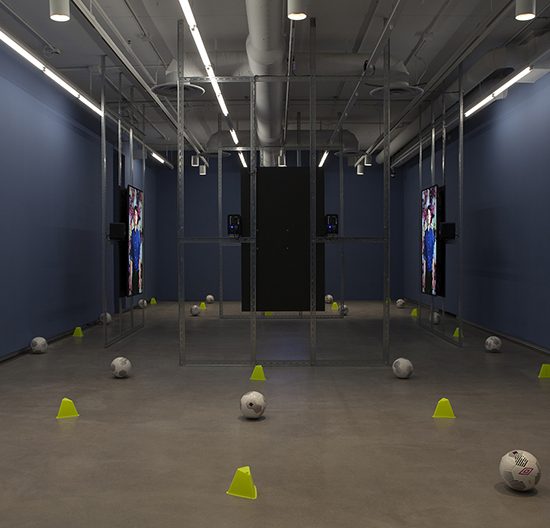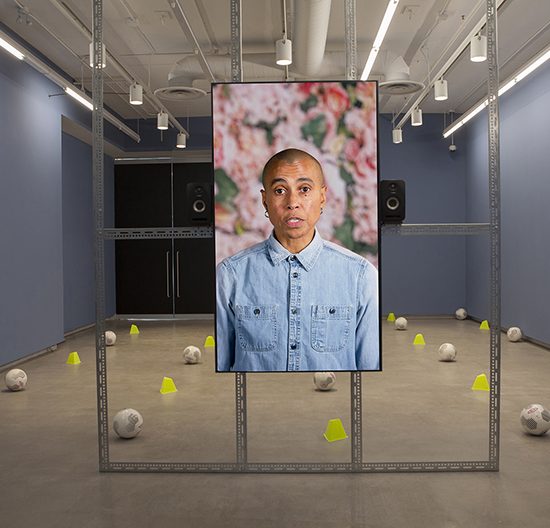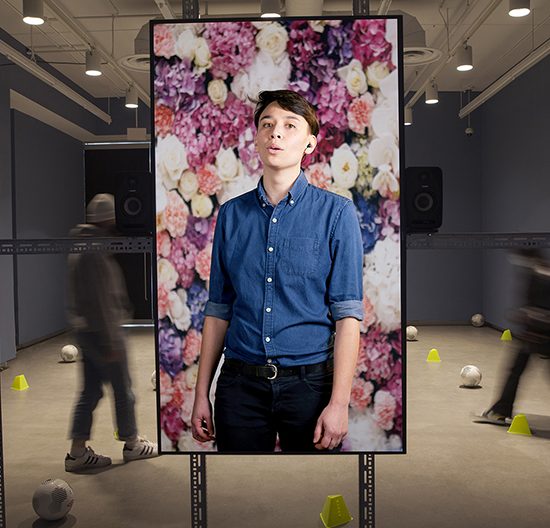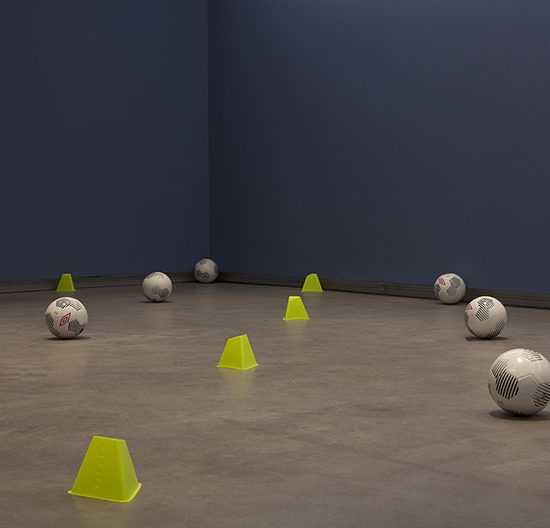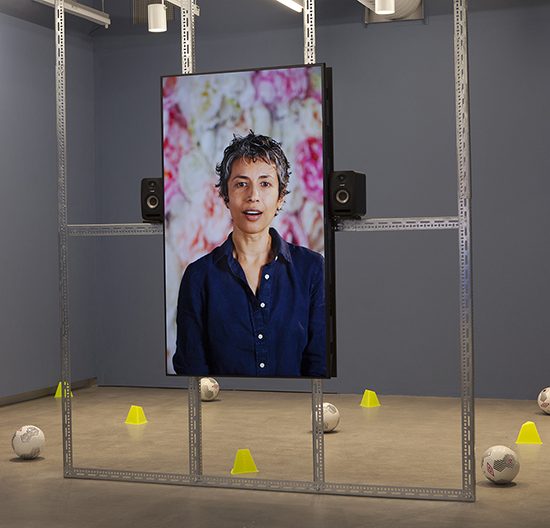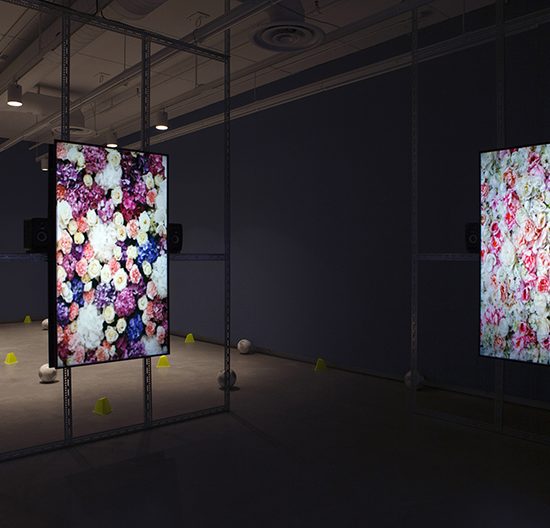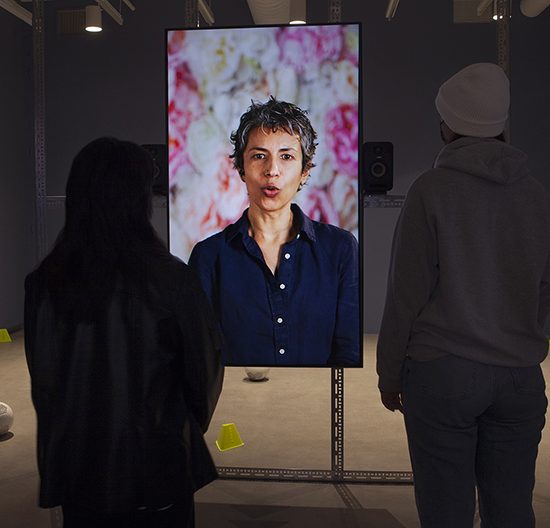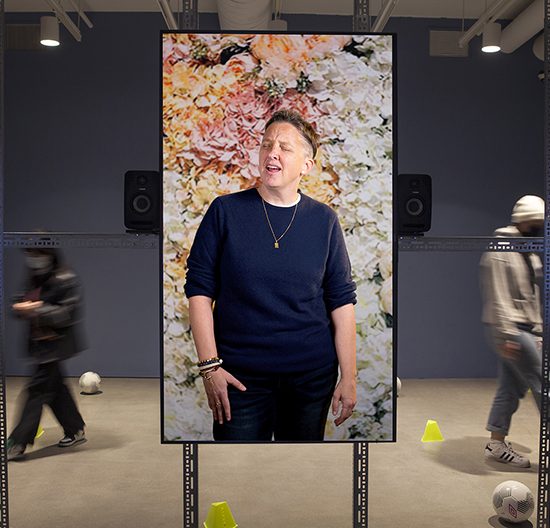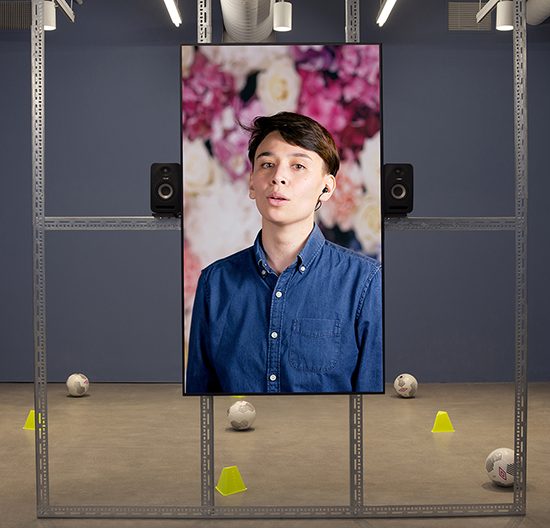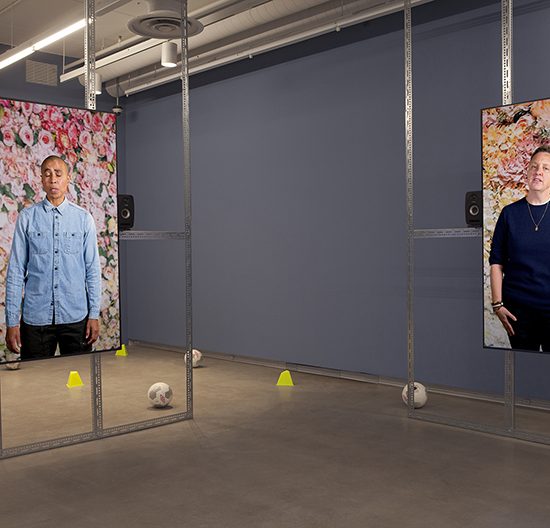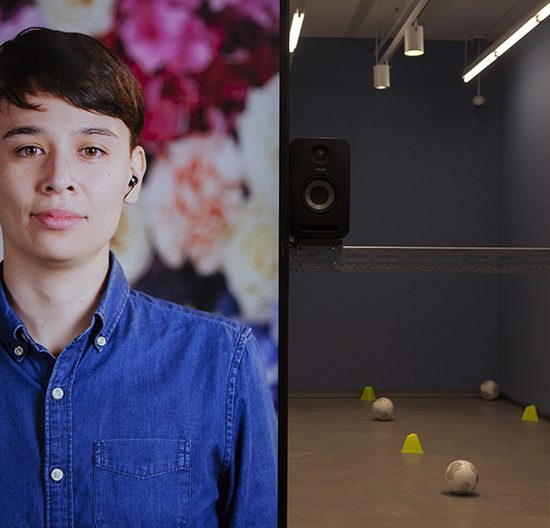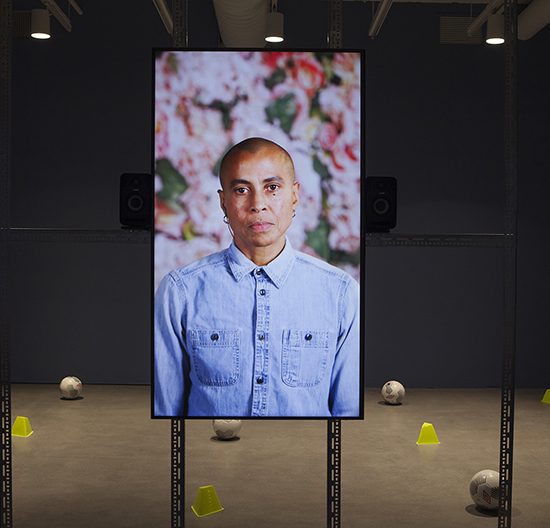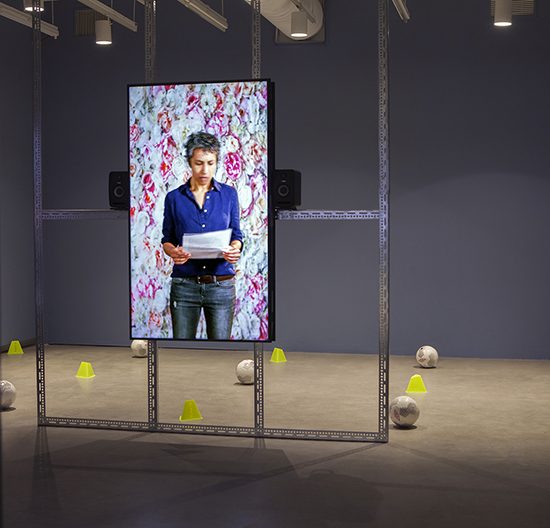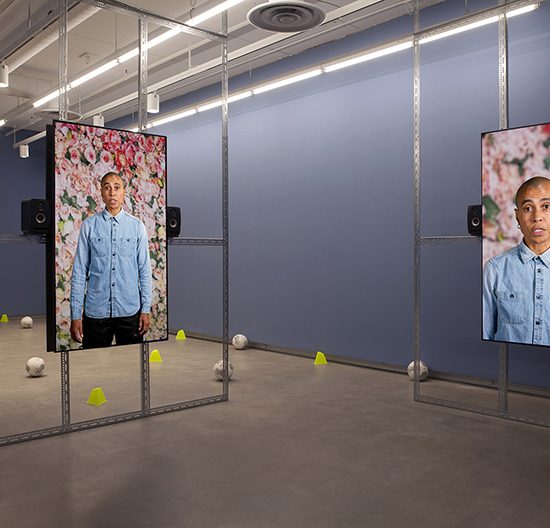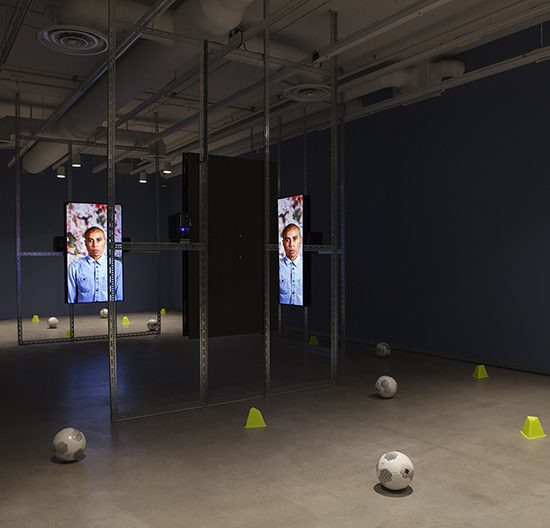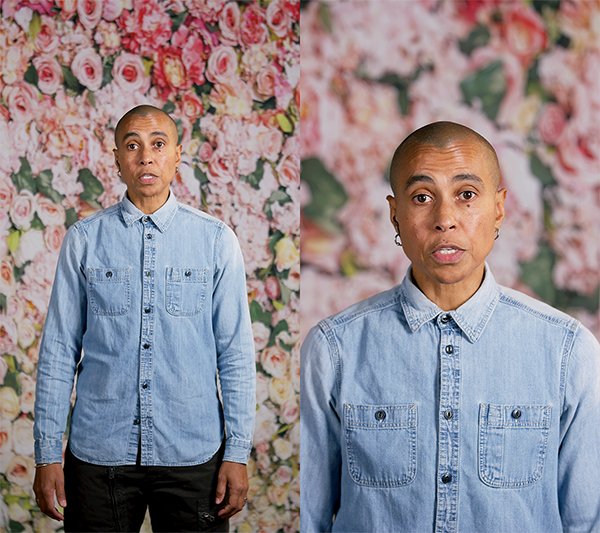
Plug In Institute of Contemporary Art is pleased to present:
Quantum Choir
A solo exhibition by Michèle Pearson Clarke
March 10 , 2023 – June 17, 2023
Opening | Friday, March 10, 2023, 6 – 9pm
Artist talk | Saturday, March 11, 2023, 1pm, Club 200, 190 Garry St.
Quantum Choir is a new body of work by renowned Toronto-based Trinidadian artist, writer, and educator, Michèle Pearson Clarke (b. 1973). This is the first time Clarke is exhibiting in the city and at Plug In ICA. This work continues forward the autoethnographic impetus of Clarke’s long and accomplished artistic practice. As before, she uses her own biographical experience as a starting point to draw out larger social and political implications; often related to black and queer experiences. Clarke’s work is always rooted in a documentary means of inquiry either through photography, video or filmmaking. With this exhibition she has opened up the possibilities of her practice particularly how she spatially considers and displays the work. For the first time, Clarke’s work has spatially transformed the exhibition space with objects, painted walls, and a built architectural apparatus for an enveloping four-channel video/sound installation.
The work begins with the video piece which was conceived after Clarke reached out to her extended circles with a prompt seeking three interested participants for her next project. They had to be queer, masculine presenting female, ‘a bad singer’ and willing to undergo vocal lessons which would culminate in a choir with Clarke. After a series of conversations with the interested participants, months of professional vocal training, each participant studio recorded their version of the song, Queen of Denmark, by folk pop singer John Grant. Clarke filmed herself and each choir member as they sang openly and publicly for the first time despite their own trepidations and ingrained repressed shame around their ‘bad singing voice’. The repressed shame, specifically for Clarke, is intermingled with an internalized sense of ‘queer failure’ i.e. of being masculine in a female body and being incapable to comply with what the dominant heteronormative culture approves as “normal”.
Creating this choir to challenge themselves was a vulnerable-making experiment. The intention was less attached to a refined outcome and more an opportunity to rise above their discomfort and fears as they performed for the camera. The final piece includes each performer on a portrait-oriented monitor looking right at us, the viewer, as we look at them in unison doing their best to sing. Each choir member has a monitor for their filmed performance and is mounted on the skeletal hub-like display structure the artist designed. The viewer is able to enter from any of the structure’s four sides to what feels like a huddle of voices harmonizing in all directions.
As with her previous commitment to creating an encouraging space for grief, vulnerability, and the attendant unease, this new exhibition makes such states of vulnerability not only possible but welcomed in a tender collective embrace. As we watch these amateur performers confront their insecurities and anxieties on camera, we are unwittingly drawn in with them to reflect on our own vulnerability. By uniting this choir of four, the artist creates solidarity among themselves as they collectively uphold a padded landing for processing each other’s emotional honesty.
In the lead-up to the day of filming, the artist checked in with each participating performer regarding what they’d like to wear so as to pair them against a complementary backdrop. Each participant sent Clarke an image of a top they had in mind, all of which had versions of a navy blue colour. In recognition of that synchronicitous happening (or could be seen as another indicator of their shared bond) Clarke elected to paint the exhibition gallery walls a version of that same navy colour, an unspoken symbol of their union. The soccer balls and cones splayed around the monitor display structure is a shorthand to a sport each performer participates in and an accepting context for their queerness.
Clarke accumulates her autobiographical archive as a result of living into the future. A central part of this ongoing archive shows us the fruits of cultivating and leaning on queer affinity and kinship as she moves through the world. This archival practice is a social necessity beyond herself and Quantum Choir is a resonant example of this.
Michèle Pearson Clarke’s (b. 1973) exhibition opens in tandem with another solo exhibition by the burgeoning American artist and educator Alanna Fields (b. 1991). This is the first time both artists are being brought into proximity in exhibition context. Clarke and Fields’ work is grounded in a sustained archival practice. While Fields tasks herself with extensive searches into the past, Clarke accumulates hers as a result of living into the future. Fields finds queer affinity and kinship through her inquiries in reversed time. And Clarke shows us the fruits of leaning on that very kinship as she moves through the world. Together, this intergenerational pair in their respective means keep alive an ever-unfolding intricate tapestry of queer history across generations.
– Luther Konadu | Assistant Curator, Plug In ICA
Michèle Pearson Clarke’s work has been included in exhibitions and screenings at the Musée des beaux-arts de Montréal, Art Gallery of Nova Scotia, Royal Ontario Museum, Lagos Photo Festival, Museum of Contemporary Art Chicago, Maryland Institute College of Art, ltd los angeles, Ryerson Image Centre, and Gallery 44 Centre for Contemporary Photography. From 2016-2017, Clarke was artist-in-residence at Gallery 44, and she was the inaugural 2020-2021 artist-in-residence at the University of Toronto’s Bonham Centre for Sexual Diversity Studies. Clarke’s writing has been published in Canadian Art, TransitionMagazine, Momus, and The Toronto Star and in 2018, she was a speaker at the eighth TEDxPortofSpain. Most recently, Clarke served as the second Photo Laureate for the City of Toronto (2019-2022), and her work was added to the collection of the National Gallery of Canada. Clarke holds a Master of Social Work from the University of Toronto, and in 2015 she received her Master of Fine Arts in Documentary Media from Toronto Metropolitan University (formerly Ryerson), where she is an Assistant Professor in Photography in the School of Image Arts.
Acknowledgments
We are on Treaty 1 Territory. Plug In ICA is located on the territories of the Anishinaabeg, Cree, Oji-Cree, Dakota, and Dene peoples, and the National homeland of the Red River Métis. Our water is sourced from Shoal Lake 40 First Nations.
Plug In ICA extends our heartfelt gratitude to our generous donors, valued members, and dedicated volunteers. We acknowledge the sustaining support of our Director’s Circle. You all make a difference.
This exhibition is presented with the collaboration of the Art Gallery of Hamilton.
We gratefully acknowledge the support of the Canada Council, the Manitoba Arts Council and Winnipeg Arts Council. We could not operate without their continued financial investment and lobbying efforts.
Plug In ICA relies on community support to remain free and accessible to all, and enable us to continue to present excellent programs. Please consider becoming a member of Plug In ICA and a donor at https://plugin.org/support or by contacting Caitlin at caitlin@plugin.org
For more information on public programming and exhibitions contact Allison Yearwood at allison@plugin.org.
For general information, please contact: info@plugin.org or call 1.204.942.1043



